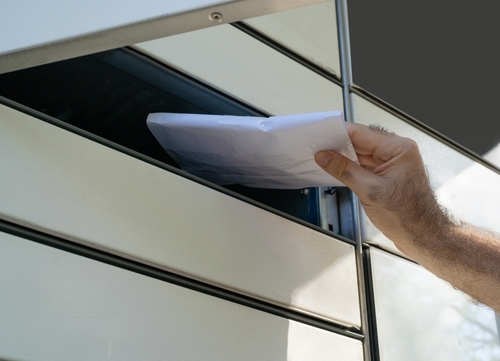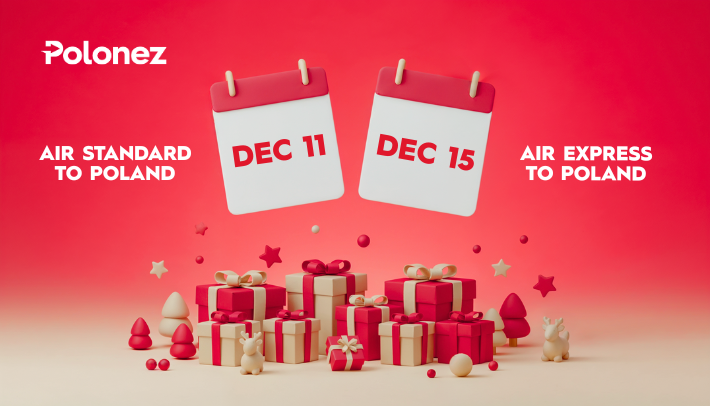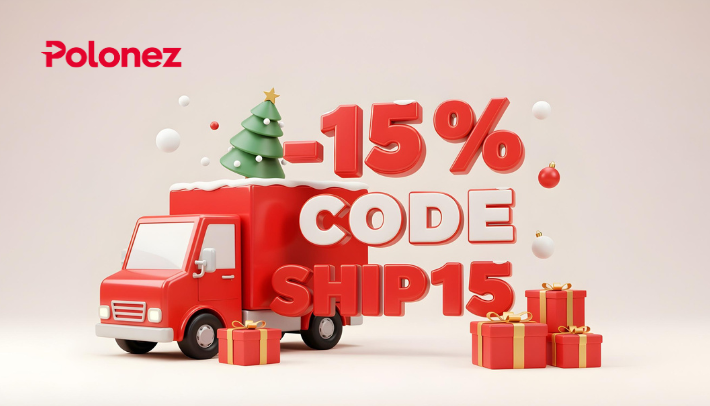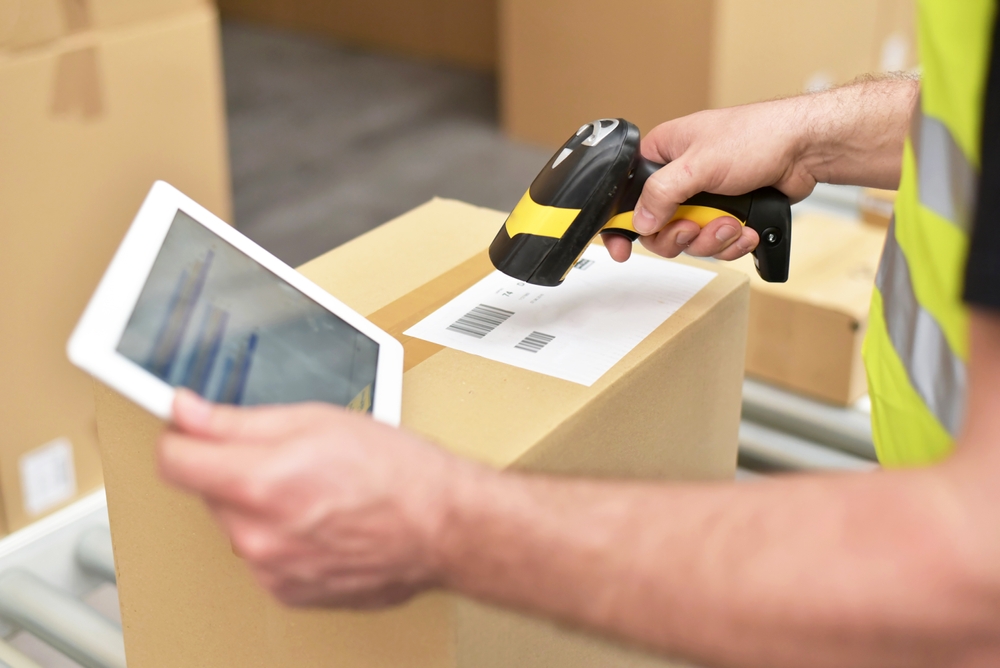Jun 9, 2025
Your ‘Send Package to Poland’ Guide and Compass

Many American retailers don't ship internationally, or their shipping fees are sky-high for consumers’ package-sending requests to Poland. That's where consolidated shipping services step in, offering a solution to bridge the geographical gap.
Consolidated shippers provide you a local address for your intended destination, making it simple to shop from American brands and have purchases forwarded directly to a doorstep in Poland. The process is more convenient than many realize, from clicking “buy” to sending or receiving packages.
The journey begins with your online shopping. When you're ready to check out, you simply use a special address provided by a package forwarder. Instead of an actual Polish address, you'll enter your own name but use the shipper’s U.S. warehouse details.
This method grants you a functional U.S. shipping address. It's a way to bypass international shipping restrictions or sometimes avoid hefty direct delivery charges, opening up a world of shopping and commercial business possibilities.
Your ‘Send Package to Poland’ Search Ends Here
If you're new to sending a package to Poland, you'll need to register an account with a qualified consolidated shipper. Otherwise, you can simply log in.
Here's where proactive management is important: you must add your order details into your account before your package physically arrives at a U.S. facility. You’ll have to input the domestic tracking number from carriers like UPS, U.S. Postal Service, or FedEx, provided by the U.S. retailer, along with a brief description of what's inside your personal or commercial package. Without this pre-registration, your shipper cannot process your order, as its system relies on this information to identify and assign incoming parcels.
It's a smart system designed to handle a large volume of diverse packages efficiently. Once your pre-registered package is received and logged at the warehouse, you'll receive an email notification.
Upon reaching a port-reading facility, your package is carefully received, its size measured, and the weight measured. This step provides data for calculating your international shipping costs. These costs can be determined by either the package's actual weight or its dimensional weight, which considers its volume.
A large, light item might cost more to ship than a small, heavy one if its dimensions are larger than meets the eye. After these measurements are taken, you'll be notified of your package's arrival and its recorded dimensions.
“It is really easy to shop online while in the US and send parcels to Poland through Polonez America,” states The Hudson Weekly. “Delivery from US online stores by Polonez America is guaranteed to be quick and unproblematic.”
Sending it On Its Way: Consolidating and Shipping
Let’s look at the warehouse step of any package sent to Poland. With your package safely at the warehouse and you being notified, it's time to arrange its travel itinerary to Poland.
You’ll log-in to your account with a consolidating shipping provider and navigate to the accepted-orders area. Here, you can select which specific items you'd like to forward internationally. A feature at this stage is the ability to consolidate multiple packages.
If you've ordered from various U.S. retailers or wholesalers, you can combine all those individual parcels into one larger shipment. This smart consolidation saves money, as sending one combined box is almost always more economical than dispatching several smaller ones. You'll then fill in the recipient's details for the Polish address, provide necessary customs declaration information, review a summary of your shipment, and pay for the international shipping.
Once your shipment is on its way, your shipper offers a tracking system, allowing you to monitor its progress every step of the international flight or ride on the seas. You’ll know exactly where your parcel is.
The last step is confirmation of your package's arrival at the correct address in Poland. This happens after it has cleared customs and been delivered by local partners, bringing your experience to a close.
Send Package to Poland Solutions and Benefits
While parcel forwarding services and cost structures for sending a package to Poland offers multiple advantages, you should always consider your deliveries’ weight and dimensions. Most package-forwarder minimum weight requirements are: 15 pounds for ocean freight and five pounds for air freight. However, this can vary.
Ocean packages over 60 pounds may incur overweight surcharges. Remember that shipping costs are based on the greater of either the actual weight or the dimensional weight – calculated from a package's length, width, and height.
To help new users navigate its system, a shipper usually provides video tutorials. This will help you understand the online process and requirements.
A Note on Surcharges and Why
Sending goods across continents means dealing with customs, with United States-to-Poland consolidated shippers simplifying this complex part of the process. They handle customs clearance once your parcels arrive in Poland, which is a relief for anyone unfamiliar with international trade rules.
For online shopping parcels specifically headed to Poland, certain value thresholds determine whether customs duties and Value Added Taxes (VAT) apply.
“Customs duty is a tariff or tax imposed on goods when transported across international borders,” according to the U.S. Customs and Border Protection. “Dutiable refers to articles on which Customs Duty may have to be paid. Each article has a specific duty rate, which is determined by a number of factors, including where you acquired the article, where it was made, and what it is made of.”
If your goods exceed these limits, you'll likely face additional charges. For instance, sometimes a Polish VAT is around 23 percent, with the customs duty ranging from 6 - 8 percent, plus a potential processing fee. These charges must be paid in full before your package can be delivered to its final destination.
Understanding these potential costs upfront is key to a smoother delivery experience.
|
Surcharge Type |
Description |
|
Fuel Surcharge |
A variable fee, typically a percentage of the transportation cost, that carriers adjust based on global fuel price fluctuations. It's a standard component for most private carriers like FedEx, UPS, and DHL. |
|
Residential Delivery Surcharge |
An extra fee charged by carriers for delivering packages to residential addresses as opposed to commercial locations, accounting for potentially higher costs and lower delivery density. |
|
Extended Area Surcharge (EAS) / Out-of-Delivery-Area (ODA) Surcharge |
A surcharge levied if the pickup or delivery address is in a remote, rural, or less accessible location, covering additional operational costs. |
|
Additional Handling Surcharge (AHS) |
This fee applies to packages requiring special handling due to their size, weight, shape (cylindrical tubes, non-standard packaging), or contents that cannot be processed through automated sorting systems. For example, FedEx applies AHS for packages over 31 kilograms (AHS-Weight) or those meeting certain dimensional criteria (AHS-Dimension, which can trigger an 18 kilograms minimum billable weight). UPS also has similar AHS. |
|
Oversize Package Surcharge |
Applied to packages that exceed the carrier's standard maximum dimensions but are still accepted for transport. This is distinct from AHS and typically applies to very large items. |
|
Dangerous Goods (DG) Fee |
A fee for shipping items classified as dangerous goods (lithium batteries, certain chemicals, flammable materials), which require special handling, labeling, and documentation. |
|
Customs Brokerage Fees / Disbursement Fees |
Fees charged when carriers act as customs brokers. This can include fees for preparing customs entries, advancing duties and taxes on behalf of the recipient (Disbursement Fee), or for handling shipments with multiple tariff lines. FedEx, for instance, has a U.S. Inbound Processing Fee. |
|
Demand Surcharge |
A surcharge that carriers like FedEx and UPS may implement during peak shipping periods or when network capacity is constrained to manage load. |
Beyond Send Package to Poland Trends: Other Countries
While direct package-to-Poland shipments are relatively straightforward, mailing parcels that transit through Poland to other European Union destinations is more intricate. This can apply to resettlement property or goods exceeding duty-free limits for the final country.
In these situations, the customs agency in Częstochowa, Poland – handled by a trusted partner – initiates a customs transit clearance. This service will contact you for specific documentation, such as authorization for the agency and, for resettlement goods, a list of household effects.
One important step is depositing a security bond, which is an amount equivalent to the anticipated customs duties and taxes in the final European Union destination country. Just know that these bonds can be pricey.
After the bond is deposited and transit clearance granted, your packages are forwarded to the customs authorities in the destination country. Upon arrival, the recipient must complete the final customs clearance procedures according to that country's regulations.
If your shipment is ultimately exempt from duties or the charges are lower than the bond paid in Poland, you can claim a refund for the excess amount from the Polish Customs Office. This usually requires returning the original bond document and providing your bank details.
While transit procedures enable broader European Union shipping, it adds layers of documentation, upfront costs, and administrative steps. This can make direct-to-Poland shipments simpler, in general.
“If you're shipping packages to countries that follow European Union (EU) customs rules, there are new customs regulations you'll need to follow,” according to the U.S. Postal Service. “If you don't provide more-detailed content descriptions on your customs forms, your packages may be returned or refused. USPS is providing tools to help shippers comply with these new rules.”
U.S. Export Rules are Your Responsibility
When shipping internationally, you're not just dealing with typical Polish package import rules. You also need to follow the export regulations of the United States.
While consolidated shippers handle the shipping, the primary responsibility for making sure your goods are lawfully and accurately declared rests with you, the sender. This means guaranteeing your shipments don't contain prohibited items like weapons, controlled substances, or explosives. You also agree to protect the carrier from any issues arising from these included items.
You will do yourself a favor by accurately describing your goods and the true value of all commercial invoices and customs declarations. Misrepresenting this information can lead to customs delays, incorrect duty assessments, fines, or even the seizure of items.
For certain specialized goods, particularly those with potential military or dual-use applications, you might even need a U.S. export license from the U.S. State Department or U.S. Commerce Department. Obtaining and providing these licenses is your responsibility.
While a shipper will likely perform checks for obvious items that are prohibited, successful compliance relies on your diligence and honesty customer-shipper.
Why Use a ‘Send Package to Poland’ Forwarder?
Solutions providers that send packages to Poland offer international online shoppers and e-commerce businesses a lot of options that address common pain points. Their unique value lies in providing a local shipping address in the country where you want to shop, such as a U.S. address for a Polish customer.
This allows you to access domestic shipping rates and promotions from retailers, and to purchase from stores that might not offer direct international shipping or charge excessive fees. Your benefits include:
-
Cost Savings: This is achieved through package consolidation, which combines multiple purchases into one shipment, as well as access to more competitive international shipping rates.
-
Access to More Products: This can broaden your shopping horizons beyond local availability. Some forwarders even offer potentially faster shipping due to optimized logistics.
-
Greater Flexibility and Control: How and when your items are shipped are important considerations. Some services offer “assisted purchase,” where the forwarder buys on your behalf if a U.S. retailer doesn't accept international credit cards.
Overcoming International Shipping Hurdles
Shipping goods from the United States to Europe, including Poland, can be surprisingly complex, but specialized shippers smooth out the difficulties. One of the biggest challenges is navigating customs and taxation.
You need to understand the destination country's regulations, deal with potential import taxes and duties, and make sure all necessary documentation is accurate. It's a maze that can lead to delays if not handled correctly.
Geopolitical shifts can also impact shipping costs and disrupt supply chains. Documentation requirements are a significant hurdle as well, with international shipments demanding paperwork, including commercial invoices detailing prices, country of origin, and specific product classification codes.
Regional variations in regulations can pop up unexpectedly, like how Brexit drastically complicated shipping to the United Kingdom a few years ago. A reliable international shipping provider adds value by simplifying these complexities. Companies that can offer transparent cost estimates, ensure compliance with all regulations, and efficiently manage paperwork are highly sought after.
With customs clearance service being a key part of many consolidating shipping and package-forwarding providers, the goal is to make this complicated process feel predictable and cost-effective.
Polonez America
Polonez America specializes in international shipments from the United States to Poland and 160 countries worldwide, customizing your United States-to-Poland shipping needs. We offer parcel shipment via ocean or air, vehicle shipment, commercial LCL (Less than Container Load) and FCL (Full Container Load) shipping.
Our comprehensive range of services means customers can initiate package or commercial shipments from any of Polonez's authorized shipping outlets within the United States, which are then transported to our headquarters for sorting. Customers can send packages from authorized shipping outlets in the United States or by sending them via UPS, FedEx, or U.S. Postal Service to Polonez America's headquarters in Port Reading, NJ.
Polonez America is your expert in the resettlement process, collaborating with European partners for parcel services, customs, and delivery within Poland and other countries. We earn client trust through integrity and professionalism by delivering the highest quality service at the most competitive price.
Recommended to you

News
Dec 2, 2025
Don’t Miss Christmas Delivery!
CHRISTMAS IS JUST AROUND THE CORNER. There’s still time to send your holiday parcels to Poland — but the shipping deadlines are approaching quickly!

News
Dec 1, 2025
15% OFF Online Shipments
December Holiday Promo

News
Nov 24, 2025
How the Middle Warehouse Ensures Quick Delivery to Poland
U.S. online shops are reaching more buyers in Europe every year thanks to quick delivery to Poland and other countries.




